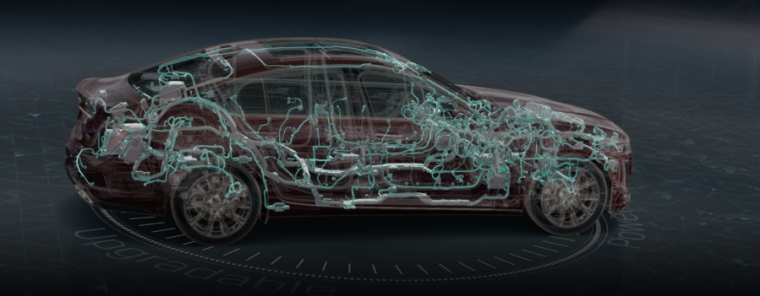General Motors designs a new “brain and nervous system” for its vehicles

Enlarge / An illustration of the new Cadillac CT5 with the electrical systems highlighted in teal. (credit: General Motors)
A common criticism of the increasingly digital nature of new cars and trucks is that all these new features are being shoehorned into systems that were not designed with features like connectivity in mind. The ubiquitous Controller Area Network bus (CANbus) first showed up in a new vehicle in 1991, long before anyone thought that it was a good idea to connect every new car to the Internet. To that end, on Monday, General Motors revealed an all-new platform architecture, designed with the needs of future-proofed connected autonomous electric vehicles in mind. "It's the brain and nervous system of the vehicles, and it's five times more capable than the one fitted to current vehicles," said Al Adams, GM's director of electric architecture and technology.
Adams is referring to the fact that the new electronic platform can manage processing up to 4.5TB per hour. One feature of the new electronic platform is support for much higher bandwidth, which means component connections of 100Mb/s, 1Gb/s, and 10Gb/s. Some of that will be helpful for the inclusion of advanced driver assistance systems (ADAS), and Adams said that the new electronic architecture will speed the rollout of GM's impressive "Super Cruise" driver assistance package across the automaker's lineup. It will also allow for higher resolution displays within the vehicle, whether that's the main instrument display in front of a driver or HD infotainment screens for the passengers.
The system has been designed with over-the-air updates in mind, an often-requested feature now that Tesla has proven the idea out. "Almost all the modules on the system have the ability to be OTA updated," explained Adams. "The interface is much like a smartphone and enables us to change the vehicle's character."
Read 3 remaining paragraphs | Comments